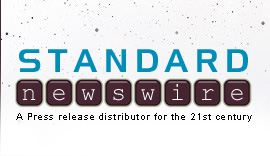Legislation Ensures Inclusion of People With Disabilities in New Communications Technologies
COAT Applauds Representative Markey for Introducing the "Twenty-first Century Communications and Video Accessibility Act of 2009"
Contact: Jenifer Simpson (AAPD), 202-457-0046; Eric Bridges (ACB), 202-467-5081; Karen Peltz Strauss (CSD), 202-363-1263; Rosaline Crawford (NAD), 301-587-7730; Adrianna Montague-Gray (AFB), 212-502-7675, all of the Coalition of Organizations for Accessible Technology
WASHINGTON, June 29 /Standard Newswire/ -- The Coalition of Organizations for Accessible Technology (COAT) is very pleased that Representative Edward Markey (D-MA) has introduced the "Twenty-first Century Communications and Video Accessibility Act of 2009" (H.R. 3101). The bill would modernize the Communications Act by ensuring that new Internet-enabled telephone and television services are accessible to and usable by people with disabilities, and closes existing gaps in federal laws governing telecommunications access.
Jenifer Simpson, of the American Association of People with Disabilities (AAPD), said, "The time is now to safeguard an accessible communications future for people with disabilities as the nation embraces new broadband and Internet technologies. AAPD applauds Rep. Markey for his leadership. We look now to the Senate for similar leadership in addressing accessible communications technologies."
Karen Peltz Strauss, of Communication Service for the Deaf (CSD), said, "H.R. 3101 puts people with disabilities squarely into 21st century communications. This legislation builds on existing law and puts the U.S. at the forefront of innovations that will ensure that people with disabilities can take full advantage of Internet advancements enjoyed by everyone else."
Rosaline Crawford, of the National Association of the Deaf (NAD), noted that "Digital technologies make it possible for televisions and other video devices - of virtually any size - to receive, transmit, and display television programs and video clips with captions, so that people who are deaf and hard of hearing are not left behind. Captioning television programs and video clips that are shown on the Internet is needed for the same reasons captioning is needed when shown on television."
Mark Richert, of the American Foundation for the Blind (AFB), stated, "We are fed up with having to play catch up whenever new technologies are released. With enactment, people with vision loss will finally have access to everything from text messaging their friends, watching their favorite television shows, and receiving critical emergency alerts."
Eric Bridges, of the American Council of the Blind (ACB), stated, "Video description and accessible user interfaces on television devices are essential in providing information about events on screen for people who are blind or visually impaired. We've waited a long time for this." Video description is verbal depiction of key visual elements inserted into natural pauses in television dialogue and is activated by the viewer.
The bill includes the following specific measures:
Communications Access
-
Requires access to phone-type equipment and services used over the Internet.
-
Adds improved accountability and enforcement measures for accessibility, including a clearinghouse and reporting obligations by providers and manufacturers.
-
Requires telephone products used with the Internet to be hearing aid compatible.
-
Allows use of Lifeline and Link-up universal service funds (USF) for broadband services.
-
Allocates up to $10 million/year from USF for equipment used by people who are deaf-blind.
-
Clarifies the scope of relay services to include calls between and among people with disabilities and requires Internet-based voice communication service providers to contribute to the Interstate Relay Fund.
-
Requires the FCC to establish a real-time text digital standard to replace the current TTY-to-TTY analog standard.
Video Programming Access
-
Requires closed captioning decoder circuitry in all video programming devices.
-
Extends the closed captioning obligations to television-type video programming distributed over the Internet: covers programming that would otherwise be covered by the FCC's captioning rules, not user-generated content.
-
Requires easy access to closed captions via remote control and on-screen menus.
-
Requires easy access by blind people to television controls and program selection menus.
-
Restores video description rules and requires access to televised emergency programming for people who are blind or have low vision.
The Coalition of Organizations for Accessible Technology, or COAT, launched in March 2007, is a coalition of over 240 national, state and community-based organizations that advocates for full access by people with disabilities to evolving high speed broadband, wireless and Internet protocol (IP) technologies. More information is available on the COAT website at www.COATaccess.org.




 Sign Up to Receive Press Releases:
Sign Up to Receive Press Releases: